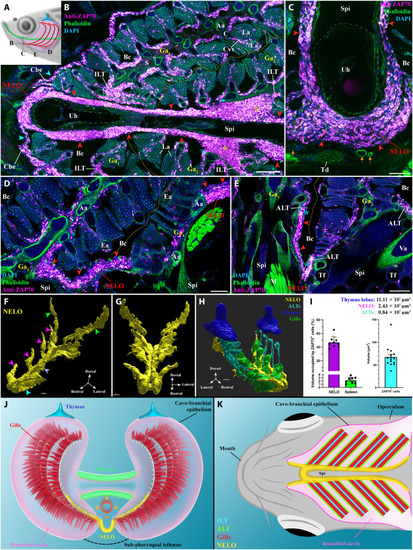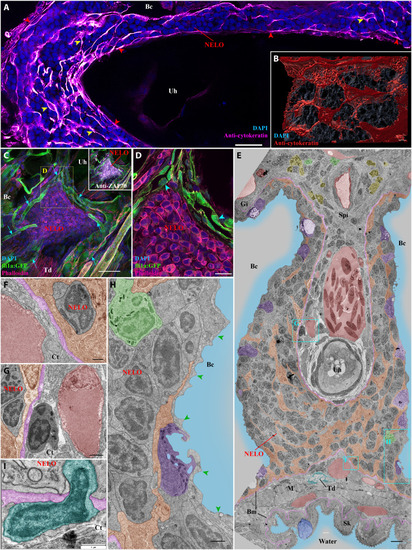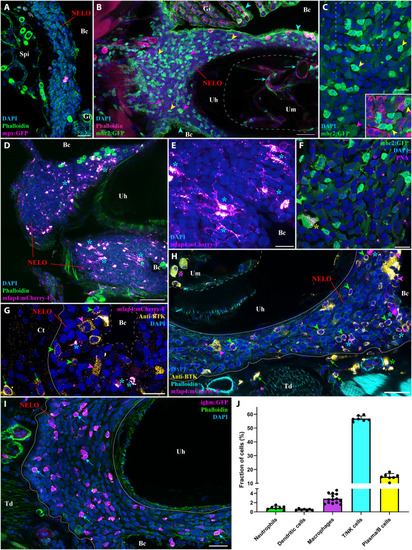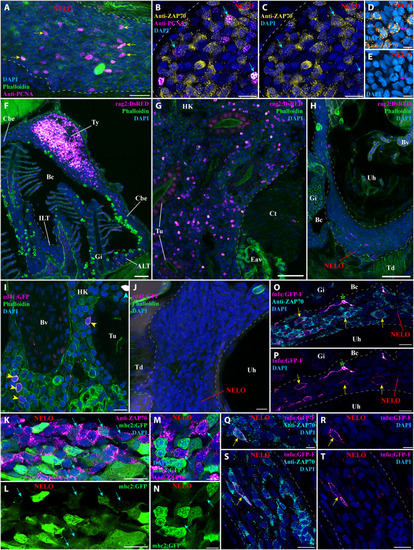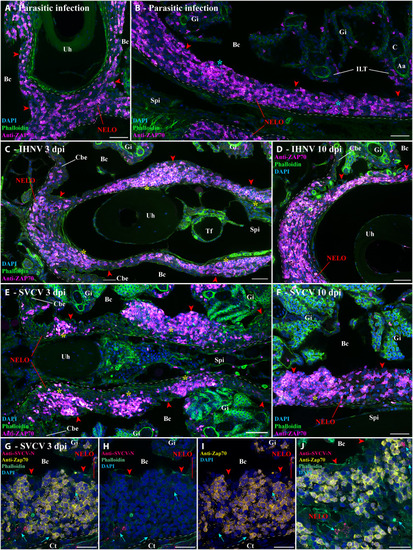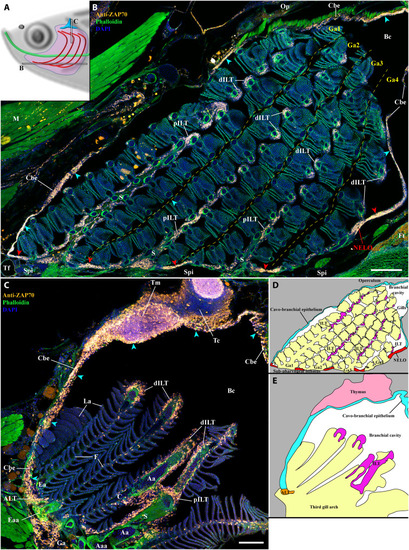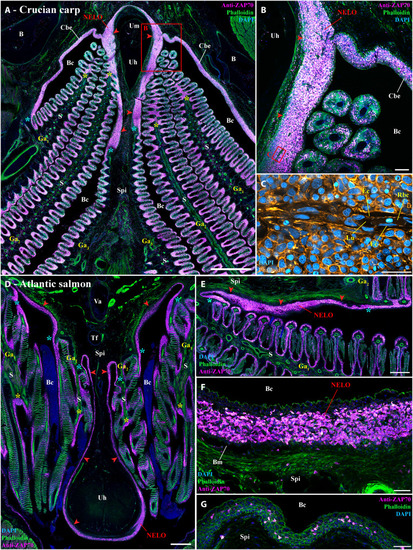- Title
-
Identification of a pharyngeal mucosal lymphoid organ in zebrafish and other teleosts: Tonsils in fish?
- Authors
- Resseguier, J., Nguyen-Chi, M., Wohlmann, J., Rigaudeau, D., Salinas, I., Oehlers, S.H., Wiegertjes, G.F., Johansen, F.E., Qiao, S.W., Koppang, E.O., Verrier, B., Boudinot, P., Griffiths, G.
- Source
- Full text @ Sci Adv
|
General organization and localization of NELO in zebrafish ( |
|
Detailed structural organization of the adult zebrafish NELO. ( |
|
NELO immune cell populations ( |
|
Investigation of immune function molecular markers in NELO. ( |
|
Structural response of NELO to viral and parasitic infections. ( |
|
NELO as part of a larger lymphoid network. ( |
|
NELO and its cohesion with ILTs and ALTs in other teleost fish species. ( |

